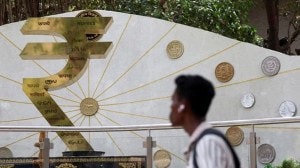Sowing of rabi crops trend shows farmers increasingly turning to pulses, oilseeds for better gains
The overall area under sowing has increased by 24 per cent at the end of November with the area under pulses seeing a rise of 42 per cent while for oilseeds it is 29 per cent
 The area under sowing increased to 36.20 lakh hectares from 29.16 lakh hectares during the same period last year.
The area under sowing increased to 36.20 lakh hectares from 29.16 lakh hectares during the same period last year.
By the end of November 2022, the sowing of crops during the Rabi season has seen a sharp increase of 24 per cent.
The area under sowing increased to 36.20 lakh hectares from 29.16 lakh hectares during the same period last year.
With two more months left for sowing, the sowing acreage covered under rabi crops is likely to cross 52 lakh hectares, sources in the agriculture department said. After initial hurdles due to erratic rainfall sowing activity have picked up since mid-November, said sources.
A preliminary report based on data till November-end shows that the farmers are increasingly opting for pulses and oilseeds instead of conventional food grains and cereals for better dividends and larger market opportunities. The area under pulses has increased significantly by 42 per cent from 14.49 lakh hectares to 20.56 lakh hectares (till November end). Similarly, the area under oilseeds has increased to 26,381 hectares from 20,435 hectares last year.
Sowing of pulses witnessed a sharp increase of 41.89 per cent while for oilseeds the sowing increased by 29 per cent.
In Maharashtra, farmers sow moong, urad, matki, popti, masoor among other pulse varieties. Whereas, the popular variety of oilseeds grown are sesame, sunflower, mustard, bhuimoong and kardai among others.
Wheat has also gained popularity with the farmers with the crop being sown on 3.73 lakh hectares till November end from 2.69 lakh hectares last year. Jowar, on the other hand, has shown a marginal decline with the area falling to 10.07 lakh hectares from 10.52 lakh hectares last year.
A region-wise comparison shows a decline in the sowing of crops in coastal Konkan, Nashik, Aurangabad and Amravati divisions. In Konkan, sowing has been completed on 8,393 hectares. Last year, it was 12,247 hectares till November end. In Nashik, the decline is small. This year it is 1.29 lakh hectares from last year’s 1.41 lakh hectares.
Farmers of Amravati have sown crops on 2.78 lakh hectares, which is lower than 3.68 lakh hectares in 2021. Aurangabad has also seen a marginal drop with 4.18 lakh hectares under sown area from 4.37 lakh hectares last year.
Officials from the agriculture department, explained, “Every area has a different reason. In some areas, the low sowing was affected due to climatic changes. In some, it could be financial problems.”
Sowing in the economically prosperous Kolhapur division has seen a massive jump from 2.89 lakh hectares to 6 lakh hectares. It is followed by the Latur division at 10.64 lakh hectares. Last year, it was 8.80 lakh hectares in the division. The Nagpur division has seen a moderate increase in sowing area at 1.91 lakh hectares compared to last year’s 1.69 lakh hectares till November end.







